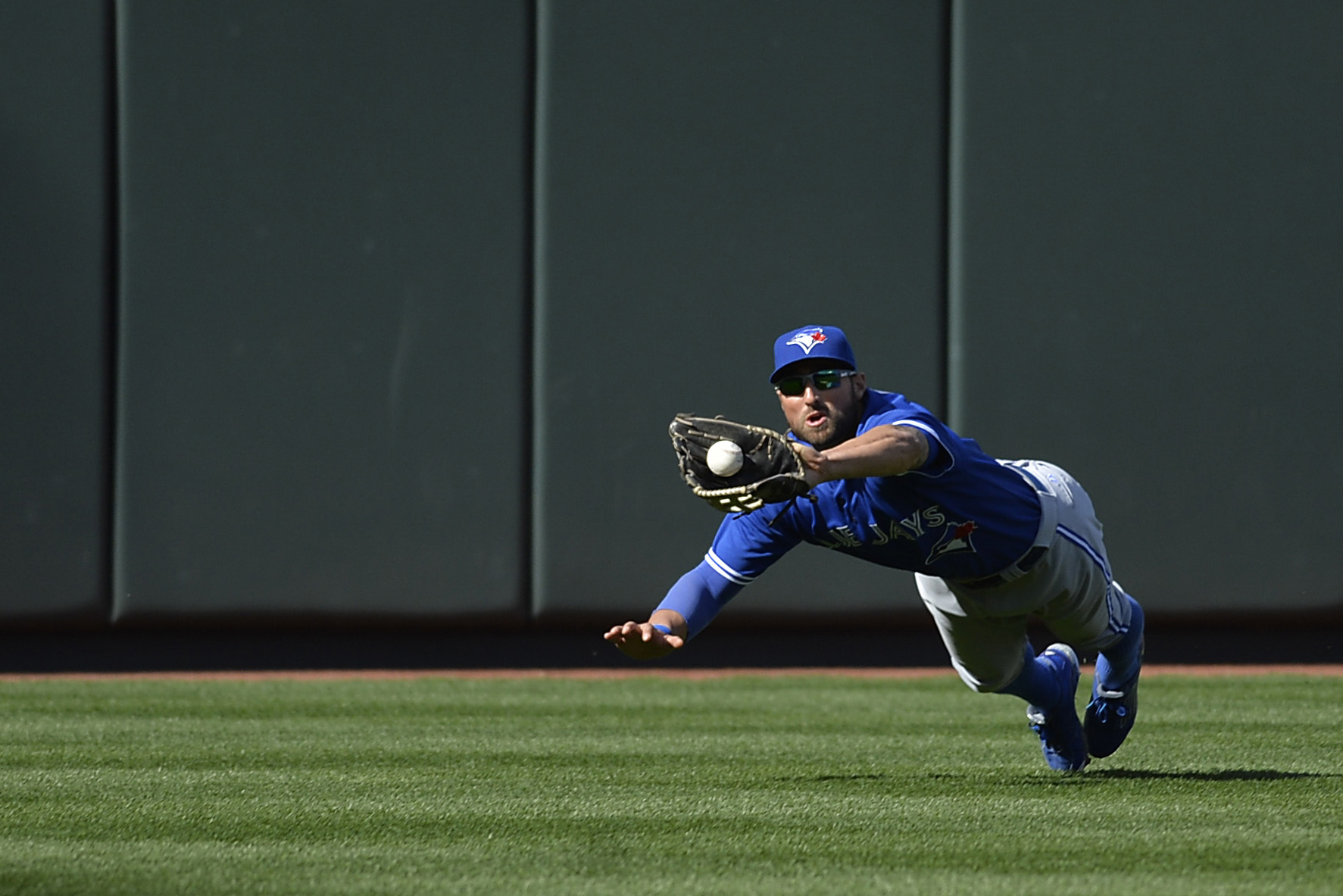One year ago today, Kevin Pillar was the guy who wouldn’t take a walk, and couldn’t handle centerfield. Sure, he was a shoo-in to make the Blue Jays Opening Day roster, but he was only guaranteed that spot because Michael Saunders had stepped on a sprinkler head and lost part of his knee. Flash forward to the present and not only is Kevin Pillar a lock to roam the middle of the Blue Jays outfield, but he is considered to be among the very best outfielders in all of baseball.
So how did we get here? When I asked Pillar, he told me that it was all about opportunity:
“I always knew I could play CF. It was just about getting the opportunity to do it. I did it in the minors, I did it in college, I did it in high school. You know, it was just about playing at the big league level in CF and getting the opportunity to make some plays. That’s ultimately what’s allowed me to keep my job out there.”
It’s an interesting concept to understand. He did play a lot in center in the past. That means that everybody had ample opportunity to see just what he could do. There’s clearly some talent there, so how exactly were all the scouting reports so very wrong on Pillar? It might just be that Pillar has been able to develop more over time in a way that can be tougher to measure:
“A lot of it is instincts. A lot of it is reading swings, making adjustments. Start moving to a direction before a ball is hit because you see the swing, and you see the pitch, and you feel like you know where the ball is going to go. And a lot of that just comes from repetition and batting practice.”
Maybe that’s what it was? Maybe Pillar just developed his defensive instincts to the point that he became a good centerfielder. It certainly helped him make a bunch of highlight reel catches.
Interestingly, Pillar plans on cutting back on those those diving and leaping plays that made him so famous. When asked what he planned to do in an attempt to become a better overall defensive player, Pillar said, “just being that much better in position where ultimately I can stay on my feet and I don’t have to dive around the yard as much.” That may sound backwards when you consider that many of those highlight reel catches were of the game-saving variety, but if you took a closer look at exactly how he was getting to those balls, it wasn’t just speed and jumping ability. Pillar was using tremendous reads and routes to get to the ball. A big part of those reads is knowing who’s pitching, who’s hitting, and where they like to hit the ball. According to Kevin, that’s how he intends to avoid the need to dive:
“It helps knowing your pitching staff and knowing the hitters, and scouting reports.Trying to be in the right place, trying to be moving before they hit the ball, knowing where guys like to hit the ball…I’m going to seeing a lot of the same hitters, and I’ve never played a full season. It’s just about staying healthy and staying on my feet and being able to go out there and do it again for 162 games a year. That’s not to say that I’m not going to dive for balls if I have to, but for me it’s just about putting myself in an even better position so I don’t have to do that.”
Pillar is definitely not a fan of sabermetrics (though he does have a sense of humor about it – he started the interview by jokingly telling me that he would only talk to me about defensive metrics), but he clearly still takes an analytical approach to his work in the middle of the diamond. This should be of great comfort to Blue Jays fans, as while it’s fun to see a guy make a catch with his body completely parallel to the ground, it’s not something anybody should be counting on. If even five of those catches turn into missed balls, things could be problematic going forward. But if Pillar can stay on his feet to catch even a quarter of those balls, he can go a long way to avoiding the type of return to earth that befalls many centerfielders who put up elite defensive numbers, seemingly out of nowhere.
If Pillar can repeat his success (he clearly has the throwing part down), the Blue Jays should continue to have arguably the very best up the middle defense in baseball. Pillar certainly agrees:
“You [have] Russell and Tulo, arguably the best at their position. You know, both have Gold Gloves to prove it. And Goins, I don’t think there’s a better defender at second base than him…yeah, that’s a pretty good place to start.”
When you combine that with the elite play of Josh Donaldson at third base, Justin Smoak’s glove at first, and a potentially healthy Michael Saunders, the Toronto Blue Jays could have above average defenders or better at 7 of the 8 regular defensive positions on the diamond. If Jose Bautista can rebound from a subpar, injury-influenced season, the Jays could be one of the better defensive teams in recent memory.
This is a far cry from the team we saw last summer, when Chris Colabello, Danny Valencia, and Ezequiel Carrera were patrolling the outfield, and Jose Reyes was the man in the middle of the infield.
What a difference a year makes.
Lead Photo: Tommy Gilligan-USA TODAY Sports

Have you seen any data (Statcast maybe?) that shows how Pillar’s first step reaction time, acceleration and top speed compare to those of other CFs?